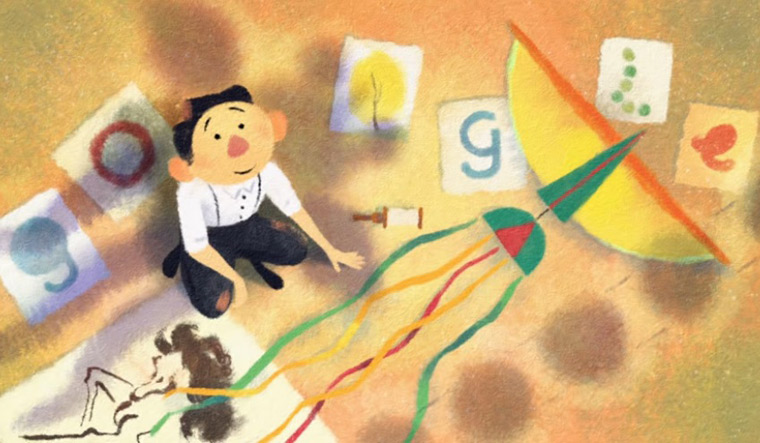Google Doodle can always be relied upon to shed the spotlight on figures that deserve recognition. Their latest prodigy is Tyrus Wong, the Chinese-American illustrator who would have celebrated his 108th birthday on Thursday.
The doodle, whose animation is a clear homage to Wong’s artistic style, starts out featuring a young Tyrus practicing his calligraphy on newspapers. His father’s support is also paid tribute to, showing him smiling at his son while gently placing a cup near him. Snatches of newspaper covers tell of his artistic journey—from a column about ‘Promising artists from China’ to a call for animators in LA, foreshadowing his move to Los Angeles and consequent work at Disney Studios. The images move on to show his transition into kite-making as he grew older, and the page redirects to a Google search about Tyrus Wong.
Wong is well known in American art circles today as one of the prominent contributors to Disney''s animated classic Bambi. Much of the scenes in the film have been influenced by his paintings inspired by classical works from the Song dynasty. A direct contrast to the studio’s previous work Snow White and the Seven Dwarfs, Bambi featured lush, vast backgrounds often focusing on a single character. This style was a departure from the watercolours that Disney usually used in their 2D animations, choosing this time to go with oil paintings. The result was an artistic masterpiece, a movie that according to TIME’s original review, ‘made the flora almost as much a character as the fawn.’
In a tragic parallel to Bambi’s own story, Wong was also permanently separated from his mother when he left his country for America in search of a better life. Detained with his father at the infamous Angel island (notorious for its purpose to keep Chinese immigrants out of America), he was the only child immigrant (a mere 10 years old) to be kept there during the time he was held for interrogation. This took place in 1920, when the rather crudely named Chinese Exclusion Act of 1882 was still in force. The law —an eerie precedent to some of the current actions by the present US administration—was the first one in America that prevented all members of a specific ethnic or national group from coming into the US. Made permanent in 1902, the Act was only repealed 41 years later by the Magnuson Act in 1943. He was finally released and allowed to join his father a harrowing three months later, after which they tried to integrate into normal American society.
Wong received a summer scholarship to the prestigious Otis Art Institute after his teachers noticed his talent. He later dropped out of junior high for a full scholarship at Otis, paying bills by working as a janitor there. He joined Disney in 1938, where he most notably spent time as a lead artist for Bambi. Tragically, his full contribution to the film went largely unrecognised till much later, as he was only credited as one of several background illustrators. In 2001 however, Disney corrected their mistake and awarded him the title of ‘Disney Legend’, joining greats like Julie Andrews, Jeffrey Katzenberg, Idina Menzel, and Walt Disney himself.
Wong passed away in 2016, at a mammoth 106 years of age. He lived a full life, moving on to kite-making after his retirement in 1968. He was also the subject of a 2015 documentary on his life, named Tyrus, directed by Pamela Tom and winning audience awards at the Boston Asian American Film Festival and the San Diego Asian Film Festival among others. Today, his life serves as a testament to the immense contributions that often go unrecognised, and in an increasingly xenophobic environment, applauds the hard work and value of immigrants in making society what it is today.



